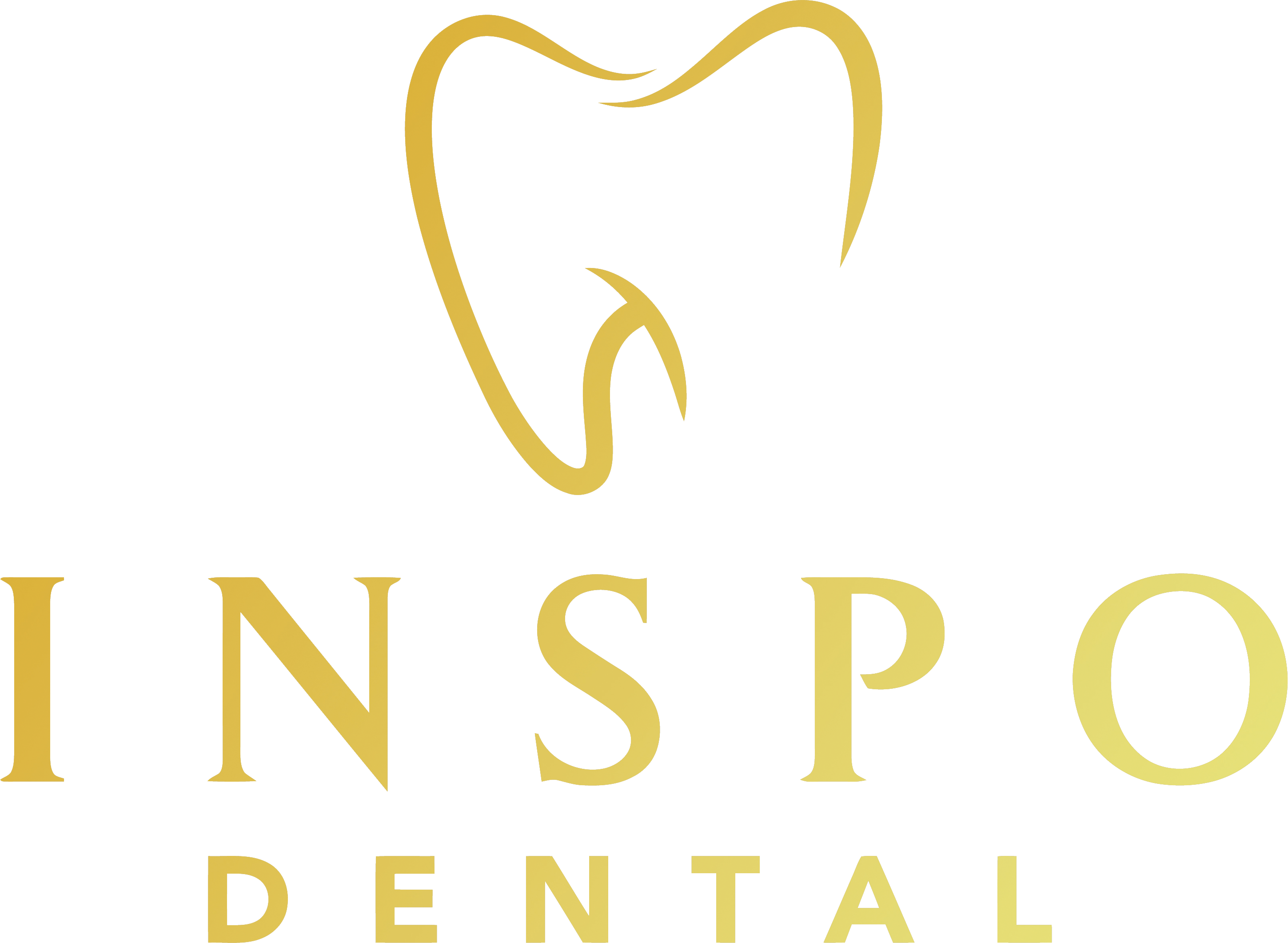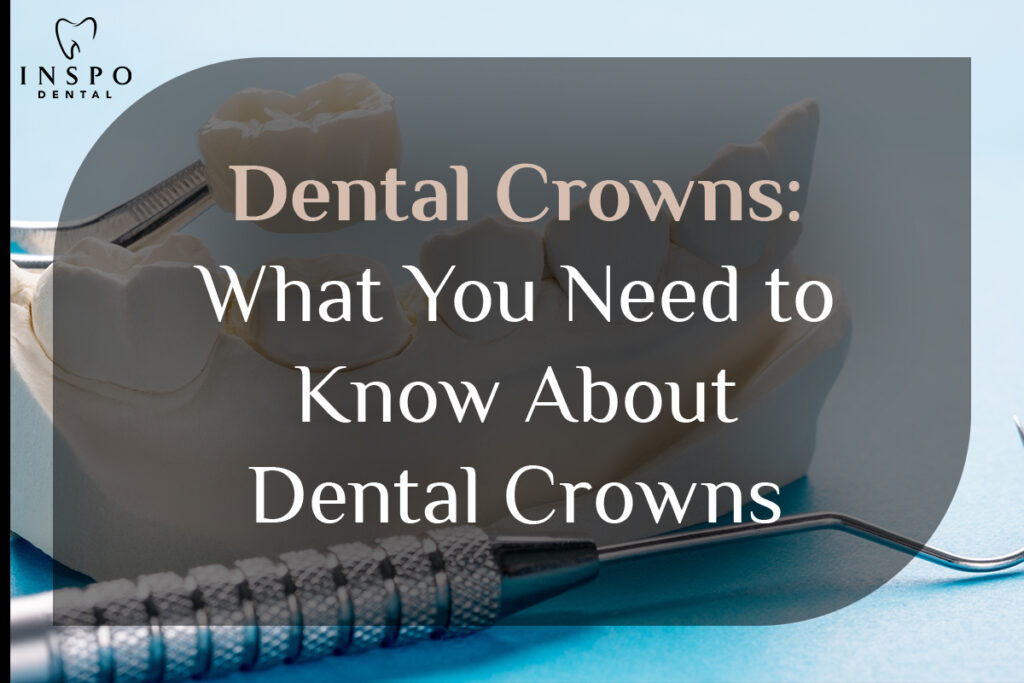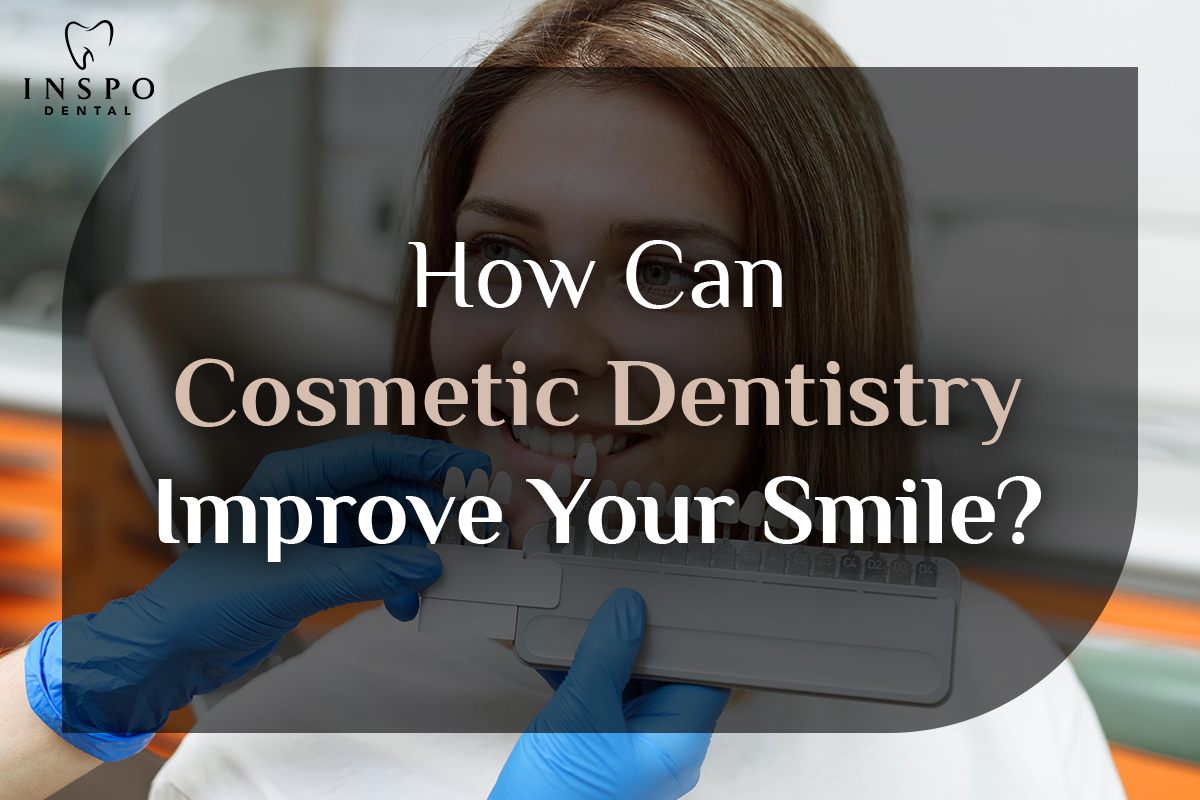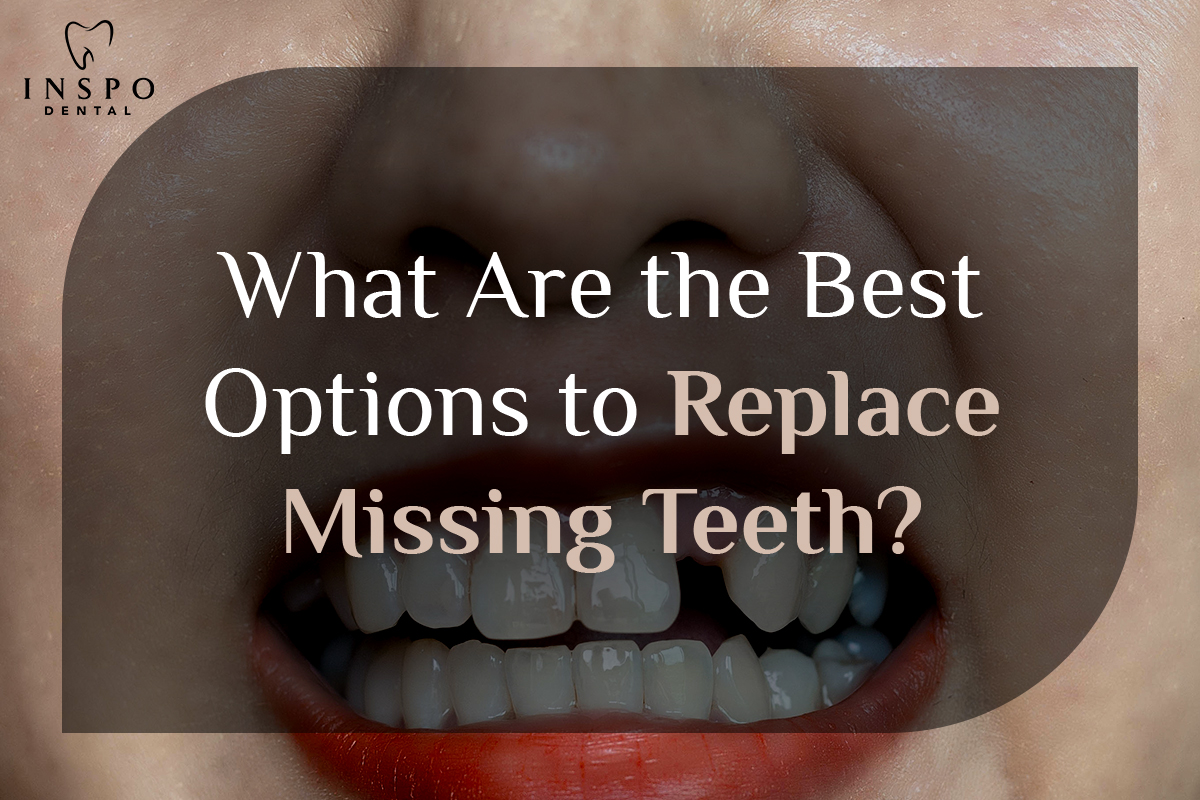
Dental crowns, also known as caps, are prosthetic devices used to restore the shape, size, strength, and appearance of damaged or decayed teeth. Here’s everything you need to know about dental crowns:
1. Purpose: Dental crowns are primarily used to protect and strengthen weakened teeth, restore functionality to teeth with extensive decay or damage, and improve the appearance of misshapen or discolored teeth. They can also be used to support dental bridges, cover dental implants, or enhance the aesthetic appearance of the smile.
2. Materials: Dental crowns can be made from various materials, including:
- Metal (e.g., gold, silver, or other alloys): Metal crowns are durable and long-lasting, making them suitable for back teeth that endure heavy biting forces. However, they are less aesthetically pleasing than tooth-colored options.
- Porcelain-fused-to-metal (PFM): PFM crowns combine the strength of metal with the natural appearance of porcelain. They provide a balance of durability and aesthetics, making them suitable for both front and back teeth.
- All-ceramic or all-porcelain: These crowns offer excellent aesthetics, mimicking the translucency and color of natural teeth. They are ideal for front teeth and patients who prioritize aesthetics.
- Zirconia: Zirconia crowns are known for their strength, durability, and biocompatibility. They are highly resistant to chipping and cracking, making them suitable for both front and back teeth.
3. Procedure: The process of getting a dental crown typically involves multiple steps:
- Examination and Preparation: The dentist examines the tooth to assess its condition and determine if a crown is necessary. If deemed appropriate, the tooth is prepared by removing a layer of enamel to make room for the crown.
- Impression: An impression or mold of the prepared tooth is taken to fabricate a custom-made crown that fits accurately.
- Temporary Crown: A temporary crown may be placed over the prepared tooth while the permanent crown is being fabricated in a dental laboratory.
- Crown Placement: Once the permanent crown is ready, the temporary crown is removed, and the permanent crown is cemented or bonded into place using dental adhesive.
4. Benefits:
- Strengthens and protects weakened teeth.
- Restores functionality for chewing and biting.
- Improves the appearance of damaged or discolored teeth.
- Supports dental bridges and dental implants.
- Enhances overall oral health and prevents further tooth decay or damage.
5. Care and Maintenance: Proper care and maintenance are essential for prolonging the lifespan of dental crowns:
- Practice good oral hygiene by brushing twice a day and flossing daily to prevent plaque buildup and gum disease.
- Avoid biting or chewing on hard objects, such as ice or hard candies, to prevent damage to the crown.
- Attend regular dental check-ups and cleanings to ensure the crown remains in good condition and any underlying issues are addressed promptly.
6. Cost: The cost of dental crowns varies depending on factors such as the material used, the complexity of the procedure, the location of the dental practice, and any additional treatments required (e.g., root canal therapy). Generally, metal crowns are the most cost-effective option, while all-ceramic or zirconia crowns tend to be more expensive due to their superior aesthetics and durability.
7. Duration: With proper care, dental crowns can last for many years, typically ranging from 5 to 15 years or more. However, the lifespan of a crown may vary depending on factors such as oral hygiene practices, biting forces, and the quality of the crown material and fabrication.
8. Considerations: Before getting a dental crown, it’s essential to discuss the procedure with your dentist and consider factors such as your oral health, budget, aesthetic preferences, and long-term goals. Your dentist will evaluate your specific situation and recommend the most suitable type of crown based on your individual needs and preferences.
9. Potential Risks and Complications: While dental crowns are generally safe and effective, there are some potential risks and complications to be aware of. These may include:
- Sensitivity: Some patients may experience temporary sensitivity to hot or cold temperatures after receiving a dental crown, especially if the tooth’s nerve was involved during preparation.
- Allergic reactions: In rare cases, patients may have allergic reactions to certain crown materials, such as metal alloys or dental adhesives.
- Decay: If the area around the crown is not properly cleaned or if there is a gap between the crown and the tooth, decay may develop underneath the crown.
- Crown fracture or dislodgment: Crowns may become fractured, chipped, or dislodged due to trauma, biting on hard objects, or underlying structural issues.
10. Alternative Options: Depending on your specific dental needs and preferences, there may be alternative treatment options to consider besides dental crowns. These alternatives may include:
- Dental fillings: For smaller areas of decay or damage, dental fillings may be a more conservative treatment option.
- Inlays or onlays: Inlays and onlays are partial crowns that cover larger areas of damage than fillings but preserve more of the natural tooth structure compared to full crowns.
- Veneers: Veneers are thin shells of porcelain or composite resin that are bonded to the front surfaces of teeth to improve their appearance. They may be used for cosmetic purposes, such as covering stains or correcting minor imperfections, rather than for restoring damaged teeth.
11. Dental Crown Maintenance: To ensure the longevity and durability of your dental crown, it’s essential to practice good oral hygiene and follow your dentist’s recommendations for maintenance. Some tips for maintaining dental crowns include:
- Brushing: Brush your teeth at least twice a day with a fluoride toothpaste and a soft-bristled toothbrush. Pay close attention to the area where the crown meets the gumline to remove plaque and prevent gum disease.
- Flossing: Floss daily to clean between teeth and around the base of the crown where food particles and plaque can accumulate.
- Regular dental visits: Schedule regular check-ups and cleanings with your dentist to monitor the condition of your crown and address any issues early on.
12. Insurance Coverage: Before undergoing a dental crown procedure, it’s essential to check with your dental insurance provider to understand your coverage and any out-of-pocket expenses you may incur. While dental insurance typically covers a portion of the cost of restorative procedures like crowns, coverage amounts and limitations may vary depending on your plan.
13. Choosing a Qualified Provider: When considering dental crown treatment, it’s crucial to choose a qualified and experienced dentist or prosthodontist who can accurately assess your dental needs, recommend the most appropriate treatment option, and perform the procedure with precision and skill. Consider factors such as the dentist’s education, training, experience, and patient reviews when selecting a provider.
14. Preparation Process: The process of preparing a tooth for a dental crown involves removing a small amount of enamel from the tooth’s surface to create space for the crown. This step is essential to ensure that the crown fits properly and aligns with the surrounding teeth. Your dentist will carefully reshape the tooth and take impressions or digital scans to create a custom-made crown that matches the size, shape, and color of your natural teeth.
15. Temporary Crowns: In some cases, a temporary crown may be placed over the prepared tooth while the permanent crown is being fabricated in a dental laboratory. Temporary crowns provide protection for the tooth and help maintain its shape and function until the permanent crown is ready. It’s important to follow any specific instructions provided by your dentist for caring for temporary crowns and avoiding damage or dislodgment.
16. Crown Placement: Once the permanent crown is ready, your dentist will remove the temporary crown (if applicable) and place the permanent crown onto the prepared tooth. The crown will be checked for fit, comfort, and aesthetics before being permanently cemented or bonded into place. Your dentist will make any necessary adjustments to ensure that the crown looks and feels natural and functions properly within your bite.
17. Post-Placement Care: After the dental crown is placed, it’s essential to follow your dentist’s recommendations for post-placement care. This may include:
- Avoiding chewing on hard or sticky foods immediately after crown placement to allow the adhesive to fully set.
- Practicing good oral hygiene by brushing and flossing regularly to keep the crown and surrounding teeth clean and free of plaque buildup.
- Attending follow-up appointments with your dentist to monitor the fit and condition of the crown and address any concerns or issues that may arise.
18. Longevity and Durability: With proper care and maintenance, dental crowns can last for many years, providing durable and reliable protection for damaged or weakened teeth. The lifespan of a dental crown may vary depending on factors such as the material used, the location of the crown in the mouth, and individual oral hygiene habits. Regular dental check-ups and cleanings can help ensure the longevity of your dental crown by detecting and addressing any issues early on.
19. Functional and Aesthetic Benefits: In addition to restoring the function and strength of damaged teeth, dental crowns can also provide significant aesthetic benefits. Crowns are custom-designed to match the color, shape, and contour of your natural teeth, resulting in a seamless and natural-looking smile. Whether you need to repair a broken tooth, cover a discolored tooth, or replace a large filling, dental crowns offer a versatile solution for enhancing the appearance of your smile and boosting your confidence.
20. Potential Sensitivity: It’s common to experience some sensitivity in the treated tooth after getting a dental crown, especially to hot or cold temperatures. This sensitivity typically subsides within a few days to a week as the tooth adjusts to the crown. However, if the sensitivity persists or worsens, it’s important to contact your dentist to rule out any underlying issues.
21. Compatibility with Oral Habits: Certain oral habits, such as teeth grinding (bruxism) or clenching, can put excessive pressure on dental crowns and increase the risk of damage or premature wear. If you have bruxism, your dentist may recommend wearing a nightguard while sleeping to protect your crowns and natural teeth from damage.
22. Impact on Adjacent Teeth: In some cases, the placement of a dental crown may require the removal of a small amount of enamel from adjacent teeth to ensure proper fit and alignment. While this is a necessary step to accommodate the crown, it’s important to be aware of any potential changes to the adjacent teeth and discuss them with your dentist.
23. Insurance Coverage and Financing Options: Before undergoing dental crown treatment, it’s essential to understand your dental insurance coverage and any out-of-pocket expenses you may incur. Dental insurance typically covers a portion of the cost of crowns, but coverage amounts and limitations may vary depending on your plan. If you have concerns about the cost of treatment, discuss financing options or payment plans with your dentist’s office.
24. Follow-Up Care and Maintenance: After getting a dental crown, it’s important to continue practicing good oral hygiene and attend regular dental check-ups to maintain the health and integrity of your crown. Your dentist may recommend using special oral care products or techniques to clean around the crown and prevent plaque buildup. Additionally, be sure to report any changes or discomfort associated with the crown to your dentist promptly.
25. Replacement Considerations: While dental crowns are designed to be durable and long-lasting, they may eventually need to be replaced due to normal wear and tear, damage, or changes in the surrounding teeth. Your dentist will monitor the condition of your crowns during regular check-ups and recommend replacement if necessary. It’s important to follow your dentist’s recommendations for replacement to ensure the continued health and function of your teeth.
By considering these factors and discussing them with your dentist, you can make informed decisions about dental crown treatment and ensure optimal outcomes for your oral health and well-being. If you have any questions or concerns about dental crowns, don’t hesitate to reach out to your dentist for personalized guidance and advice.





